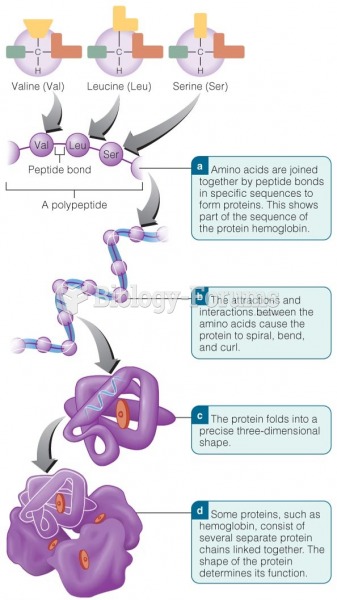|
|
|
The first documented use of surgical anesthesia in the United States was in Connecticut in 1844.
Complications of influenza include: bacterial pneumonia, ear and sinus infections, dehydration, and worsening of chronic conditions such as asthma, congestive heart failure, or diabetes.
Atropine, along with scopolamine and hyoscyamine, is found in the Datura stramonium plant, which gives hallucinogenic effects and is also known as locoweed.
Patients who have undergone chemotherapy for the treatment of cancer often complain of a lack of mental focus; memory loss; and a general diminution in abilities such as multitasking, attention span, and general mental agility.
Most childhood vaccines are 90–99% effective in preventing disease. Side effects are rarely serious.
 Decorative white silk crosses are an ingenious tactic used by orb-weaving spiders to protect their w
Decorative white silk crosses are an ingenious tactic used by orb-weaving spiders to protect their w
 The Power and Control Wheels of Abusive Relationships When one person in a relationship repeatedly ...
The Power and Control Wheels of Abusive Relationships When one person in a relationship repeatedly ...





